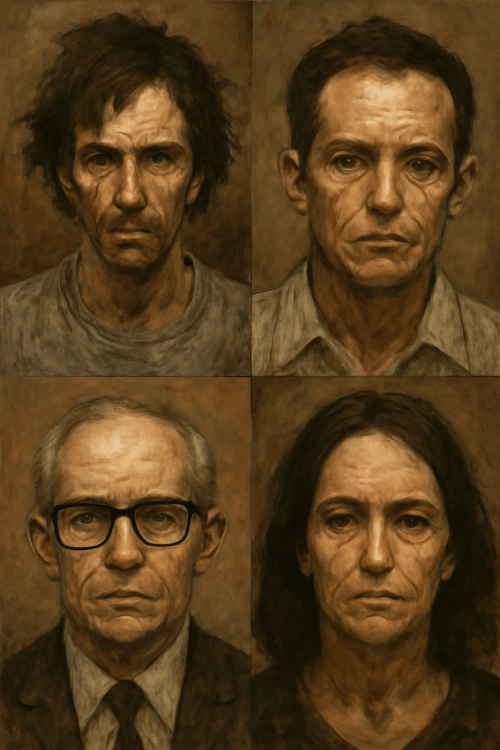
Top 10 Strangest Motives for Murder: When Logic Dies and Madness Takes Over
Murder is often explained by the old trinity of motive: money, jealousy, revenge. But some killers defy all logic — their reasons are so strange, irrational, or chillingly absurd that they leave even seasoned detectives shaking their heads.
From the Cold War agent slain with a poisoned umbrella to a cannibal who believed eating beauty could make it his own, these crimes show that not all murder is born of hatred. Some are rooted in delusion, obsession, superstition — or simply the bizarre corners of the human mind.
Each case in this list reminds us that the question “why?” is sometimes the hardest one to answer.
1. The Umbrella Assassin – Georgi Markov (London, 1978)
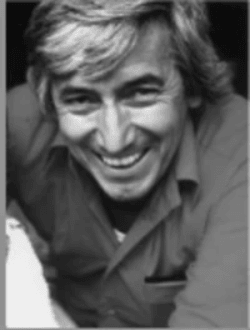
It was a bright London morning when Bulgarian dissident Georgi Markov waited for a bus near Waterloo Bridge. A stranger brushed past him, tapping his thigh with an umbrella tip. Markov felt a sting — like an insect bite — and within days, he was dead. The autopsy revealed a tiny metal pellet laced with ricin, a poison with no antidote. Investigators suspected Bulgarian secret police, aided by the KGB, had orchestrated the hit to silence the outspoken journalist who mocked the Communist regime on Radio Free Europe. The murder weapon, an umbrella modified to fire a micro-pellet, sounded like something from a spy novel — and it was. No one was ever charged. The “Umbrella Assassin” disappeared into Cold War legend, leaving behind one of history’s strangest motives: the silencing of a voice, delivered with a gentleman’s umbrella.
2. The Lottery Curse – Abraham Shakespeare (Florida, 2009)

When construction worker Abraham Shakespeare won $30 million in the Florida lottery, he believed his troubles were over. Instead, they had just begun. Friends, family, and strangers lined up for handouts. Then came Dee Dee Moore, who claimed she wanted to write a book about him. In truth, she wanted his fortune. Within months, Shakespeare vanished. Moore insisted he was “on vacation” — but investigators later found his body buried under a concrete slab in her backyard. The motive? Greed, disguised as friendship. Yet the tragedy went deeper — Shakespeare often said he wished he’d never won. His story became a grim parable about envy, betrayal, and the fatal price of luck.
3. The Voice of God – Herbert Mullin (California, 1972–1973)

Herbert Mullin believed he was saving California from a catastrophic earthquake. Voices in his head — which he said were messages from God — told him that human sacrifices would prevent the disaster. Over thirteen months, Mullin murdered thirteen people, including strangers, a priest, and his own friend. He confessed calmly, explaining that each victim was a “volunteer” in his mission. Psychiatric experts diagnosed him with paranoid schizophrenia, yet his logic was eerily consistent in his delusion. Mullin’s crimes remain a chilling study in madness — when divine belief turns homicidal, and salvation becomes slaughter.
4. The Facebook Friend Request Murder - Tennessee, USA (2012)

In the age of social media, friendship can be as simple - and as dangerous - as a single click. In 2012, a seemingly harmless Facebook interaction spiraled into one of Tennessee’s most chilling modern crimes. Billie Jean Hayworth and her fiancé, Billy Payne Jr., were a young couple from Mountain City, recently engaged and celebrating the birth of their baby boy. But when a friend request on Facebook ignited jealousy and obsession in another woman, the result was a double murder that shocked a small community.
The trouble began when 23-year-old Janelle Potter, a socially isolated woman living with her parents, became fixated on Billy and Billie Jean. After a series of petty online arguments, she claimed she was being “harassed” by the couple. What began as digital drama escalated into something far darker when her father, Marvin “Buddy” Potter, and family friend Jamie Curd took matters into their own hands - believing they were protecting Janelle from supposed bullies.
In January 2012, Payne and Hayworth were found shot in their home, their infant son miraculously left unharmed. Investigators soon uncovered a web of deceit and manipulation. Janelle had fabricated fake online profiles - including one posing as a CIA agent - to convince her family that Billie Jean and Billy were part of a sinister plot against her.
The murders were the tragic result of delusion meeting digital obsession - a reminder that in the virtual age, envy and paranoia can cross into deadly reality.
5. Death by Cleanliness – Genene Jones (Texas, 1980s)

Pediatric nurse Genene Jones was supposed to save lives. Instead, she injected infants with lethal doses of drugs to trigger medical emergencies — so she could “save” them and be hailed a hero. The twisted logic of her motive defied comprehension: she believed creating crises proved her competence. Dozens of babies died before suspicion fell upon her. Jones was convicted decades later, serving life in prison. Her crimes remain a haunting example of how narcissism, cloaked in compassion, can turn healing into horror.
6. The Cannibal for Love – Issei Sagawa (Paris, 1981)
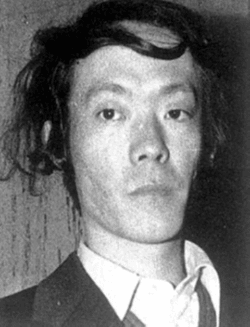
In 1981, a quiet Japanese student named Issei Sagawa invited his Dutch classmate Renée Hartevelt to dinner at his Paris apartment. She came, unaware that her admirer had darker intentions. Sagawa shot her in the neck, then committed acts so grotesque they stunned the world: he ate parts of her body. Later, he explained that his motive was not hatred or rage, but obsession — he believed consuming her would let her “live inside him forever.” Declared legally insane, he was repatriated to Japan and never imprisoned. Sagawa became a morbid celebrity, appearing in interviews and even writing books. His crime blurred the line between love, lust, and lunacy — a grotesque expression of desire taken to its most horrifying extreme.
7. The Jealous Twin – Ronald Tammen Jr. and the Case of Identity Obsession (Ohio, 1953)
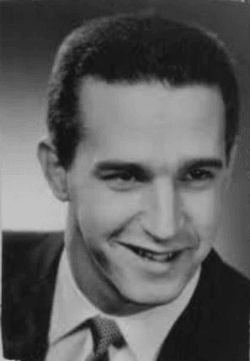
When college student Ronald Tammen Jr. vanished from his dorm room, leaving behind his car, wallet, and even his unfinished homework, theories swirled for decades. But a stranger twist emerged from whispers among those who knew him: Tammen had been fixated on his twin brother — a successful, outgoing mirror image of himself. He envied him so deeply, some believed he sought to reinvent himself entirely. While proof is scarce, investigators have long speculated that his disappearance — whether by suicide, murder, or voluntary flight — was fueled by a pathological identity crisis. If true, Tammen’s case becomes one of the strangest of all: a man who may have killed not another person, but his own identity.
8. The Mirror Murder – Hiroshi Maeue (Japan, 2008)

In 2008, Japanese man Hiroshi Maeue murdered three people in a bizarre sequence of crimes that stemmed from a warped fascination with empathy and reflection. He lured his victims through suicide forums, offering to die alongside them — but instead strangled them. When arrested, he chillingly told investigators that each killing was like “watching himself fade,” claiming he saw “his own reflection” in their final moments. The motive? A pathological need to “understand himself through death.”
Also known as the Suicide Website Murderer, Maeue’s case defied easy categorization — part delusion, part identity crisis, part calculated cruelty. It remains one of Japan’s most psychologically disturbing homicides, not because of the body count, but because of the surreal motive that blurred self and victim into one.
9. The Angel of Mercy – Donald Harvey (Ohio & Kentucky, 1970–1987)

Donald Harvey worked as an orderly in hospitals across Ohio and Kentucky, where he claimed to have killed as many as 87 patients. His justification? He was “easing suffering.” Yet many of his victims weren’t terminally ill at all. Harvey poisoned, suffocated, or disconnected patients he deemed “ready to go.” He said he saw himself as an angel — a bringer of peace. In truth, he was one of America’s most prolific serial killers, masking sadism as mercy. His case forces the question: was his motive delusion, control, or a warped sense of compassion? Perhaps all three.
10. The Vampire of Sacramento— Richard Trenton Chase (USA, 1970s)
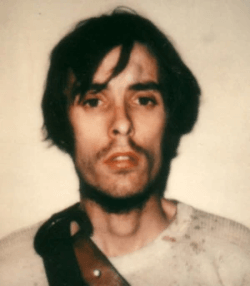
In the dark and disturbing landscape of the 1970s, Richard Trenton Chase became one of the most chilling figures in American criminal history. Dubbed the “The Vampire of Sacramento” Chase was a deeply troubled individual whose schizophrenia led him to believe that his blood was turning to powder. This delusion drove him to commit a series of horrifying acts, convinced that he needed to drink the blood
As a child in Sacramento, California, he exhibited signs of mental illness and cruelty to animals — early red flags later associated with psychopathy. By his twenties, his delusions had spiraled beyond control. He believed his heart would stop if he didn’t consume blood. Starting with small animals, he escalated to human victims in 1977–78, committing a series of murders so gruesome they shocked even veteran detectives.
Chase killed at random, entering homes he found unlocked — believing that if a door was open, it was an “invitation.” Inside, he mutilated his victims, drank their blood, and in some cases, consumed parts of their organs.
When finally captured, Chase showed no remorse. Instead, he calmly explained his belief that he had to kill to survive — a nightmarish glimpse into the mind of untreated schizophrenia turned homicidal. Declared legally insane, he was sentenced to death but took his own life in prison in 1980.
Closing Note: From superstition to spoilers, from jealousy to divine delusion, these ten cases expose some of the strangest corners of the human psyche. Want to read more shocking full length stories like this?
MACABRE TRUE CRIMES & MYSTERIES BOX SET VOLUMES 1 - 3
60 SOLVED AND UNSOLVED TALES FROM AROUND THE WORLD
From human stew to hammer murders, these are the crimes nightmares are made of..!
Why read fiction ghost stories when history drips with true tales of cannibals, assassins and ritual killers?
Have questions? Visit the Ask Guy page for more about the stories and series
Blog written by Guy Hadleigh, author of Crimes That Time Forgot, the Macabre True Crimes & Mysteries Series, the Murder and Mayhem Series, the British Killers Series, the Infamous True Crimes and Trials Series - and many more!

